
Defra has today (30th August 2024) announced plans for a refreshed bovine TB control badger strategy. Whilst it is good to see a clearly stated intention to stop culling badgers, that this will not happen before the end of the current parliament (2029) is completely unacceptable. These plans propose five more years of badger culling, all without sound scientific basis, and would result in the total number of culled badgers exceeding 300,000, all with no measurable disease benefit.
It is equally disappointing to see proposals for mass badger vaccination to be employed as a tool against bovine TB in cattle. This is an unwelcome, and scientifically unjustified continuation of the badger blame game. The scientific evidence just does not support the continued focus on badgers as a significant source of bovine TB in cattle, despite ill-informed media reports in recent weeks. It is a complete waste of resources when the real need is to retrain vets on the science of bovine TB and wildlife, over which they have been misled for many years, and to change cattle testing policy.
While we welcome the statement that “The full strategy will be co-designed with farmers, vets, scientists and conservationists”, we are somewhat sceptical about how inclusive this will be. There has been no engagement with scientists involved in important peer-reviewed science (here and here), despite frequent requests for meetings or at least dialogue. Will there be continued resistance to accept published science that challenges the views of those civil servants at Defra who have been pushing un-evidenced, expensive and unethical policy for so long? An uncomfortable history of bad decision making by those who need to stand aside to allow genuine progress.
Not mentioned in the statement, is the 22nd August consultation on licensing of a new badger cull in the Low Risk Area (LRA). It looks likely that Labour are not just re-authorising existing licences, they are planning to start new licences in new areas, this one in Cumbria in the Eden valley north and east of Penrith. This will have a 100% cull objective, repeating the failed epi-cull of the immediately adjoining area, the subject of a report last year (see here). There are rumours that two further LRA culls may be licenced this autumn or next, possibly in Lincolnshire and Hertfordshire / Bucks and who knows where else?
Here is the Defra announcement in full:
Government to end badger cull with new TB eradication strategy
- First Bovine TB strategy in a decade to end badger cull and drive down TB rates to protect farmers livelihoods
- New holistic approach will ramp up cattle control measures, wildlife monitoring and badger vaccinations
- Proposals co-designed alongside farmers, vets, scientists, and conservationists to beat TB that devastates livestock farmers and wildlife
Work on a comprehensive new TB eradication strategy has been launched today (30 August) to end the badger cull and drive down Bovine Tuberculosis (TB) rates to save cattle and farmers’ livelihoods.
Over the past decade, TB has had a devastating impact on threatened British livestock and wildlife. Over 278,000 cattle have been compulsorily slaughtered and over 230,000 badgers have been killed in efforts to control the disease, costing taxpayers more than £100 million every year.
For the first time in over a decade, the Government will introduce a new bovine TB eradication strategy working with farmers, vets, scientists and conservationists to rapidly strengthen and deploy a range of disease control measures.
The new strategy will mark a significant step-change in approach to tackle this devastating disease, driving down TB rates and saving farmer livelihoods and businesses. It will use a data-led and scientific approach to end the badger cull by the end of this parliament.
The work to end the badger cull starts immediately and includes:
- First badger population survey in over a decade: The last major badger survey was carried out between 2011-13, leaving policy makers with no clear idea of the impact culling techniques have on our badger populations. The Government will work at pace to launch a new survey this winter to estimate badger abundance and population recovery to illustrate the impact of widespread culling over the past decade.
- New national wildlife surveillance programme: After a decade of culling, the prevalence of TB in remaining badger populations is largely unknown. The development of a new national wildlife surveillance programme will provide an up-to-date understanding of disease in badgers and other wildlife such as deer. Together with updated estimates of badger abundance, this will unlock a data-driven approach to inform how and where TB vaccines and other eradication measures are rapidly deployed to drive down TB rates and protect farmers’ livelihoods.
- Establish a new Badger Vaccinator Field Force: Badger vaccinations create progressively healthier badger populations that are less susceptible to catching and transmitting TB. A new Badger Vaccinator Field Force will increase badger vaccination at pace to drive down TB rates and protect badgers.
- Badger vaccination study: To supplement the Field Force, the Government will rapidly analyse the effect of badger vaccination on the incidence of TB in cattle to encourage farmers to take part and provide greater confidence that doing so will have a positive effect on their cattle.
In addition, we will accelerate work on the development of a cattle vaccine, whichis at the forefront of innovative solutions to help eradicate this disease. The next stage of field trials will commence in the coming months. Our aim is to deliver an effective cattle TB vaccination strategy within the next few years to accelerate progress towards achieving officially TB free (OTF) status for England.
The full strategy will be co-designed with farmers, vets, scientists and conservationists. It will consider a range of further measures including boosting cattle testing, reducing the spread of disease through cattle movements, and deploying badger vaccination on a wider, landscape scale. This will build on Professor Sir Charles Godfray’s 2018 independent strategy review.
Minister for Food Security and Rural Affairs, Daniel Zeichner said:
“Bovine tuberculosis has devastated British farmers and wildlife for far too long.
“It has placed dreadful hardship and stress on farmers who continue to suffer the loss of valued herds and has taken a terrible toll on our badger populations.
“No more. Our comprehensive TB eradication package will allow us to end the badger cull by the end of this parliament and stop the spread of this horrific disease.”
Chief Veterinary Officer Christine Middlemiss said:
“Bovine tuberculosis is one of the most difficult and prolonged animal disease challenges we face, causing devastation for farming communities.
“There is no single way to combat it, and a refreshed strategy will continue to be led by the very best scientific and epidemiological evidence. With the disease on a downward trajectory, we are at a crucial point. Working in collaboration with government and stakeholders will be the only way we achieve our target to eradicate bovine tuberculosis in England by 2038.”
John Cross, chair of the bTB Partnership said:
“As chair of the bTB Partnership for England, I am delighted to hear Minister Zeichner’s intention to refresh the current bTB strategy. Ten years after its launch, the time is right to look again at the tools we use to tackle this persistent disease.
“Bovine TB is the common enemy, not farmers or wildlife groups. Only by working together, will we reach our goal.”
The government will also publish additional information about animal and herd-level bTB risk – for example, the date and type of the most recent TB test completed in the herd of origin of that animal and how long the animal has been in the herd.
This greater level of detail will be made available on ibTB – a free to access interactive map set up to help cattle farmers and their vets understand the level of bovine TB in their area and manage the risks when purchasing cattle.
Today’s announcement ensures the government meets its manifesto commitment and represents a new direction in defeating this disease that will both protect the farming community and preserve wildlife.
Notes to editors:
Existing cull processes will be honoured to ensure clarity for farmers involved in these culls whilst new measures can be rolled out and take effect.
The Bovine TB Partnership is a stakeholder-government collaboration established as a driving force for further progress towards disease eradication. It is made up of experts from government (Defra, APHA and Natural England), as well as farmers, veterinarians, scientists, academics, and ecologists/conservationists, including representatives from the National Farmers Union, British Veterinary Association, British Cattle Veterinary Association, and the National Trust.
Department for Environment, Food and Rural Affairs (Defra) This email and any attachments is intended for the named recipient only. If you have received it in error you have no authority to use, disclose, store or copy any of its contents and you should destroy it and inform the sender. Whilst this email and associated attachments will have been checked for known viruses whilst within Defra systems we can accept no responsibility once it has left our systems. Communications on Defra’s computer systems may be monitored and/or recorded to secure the effective operation of the system and for other lawful purposes.

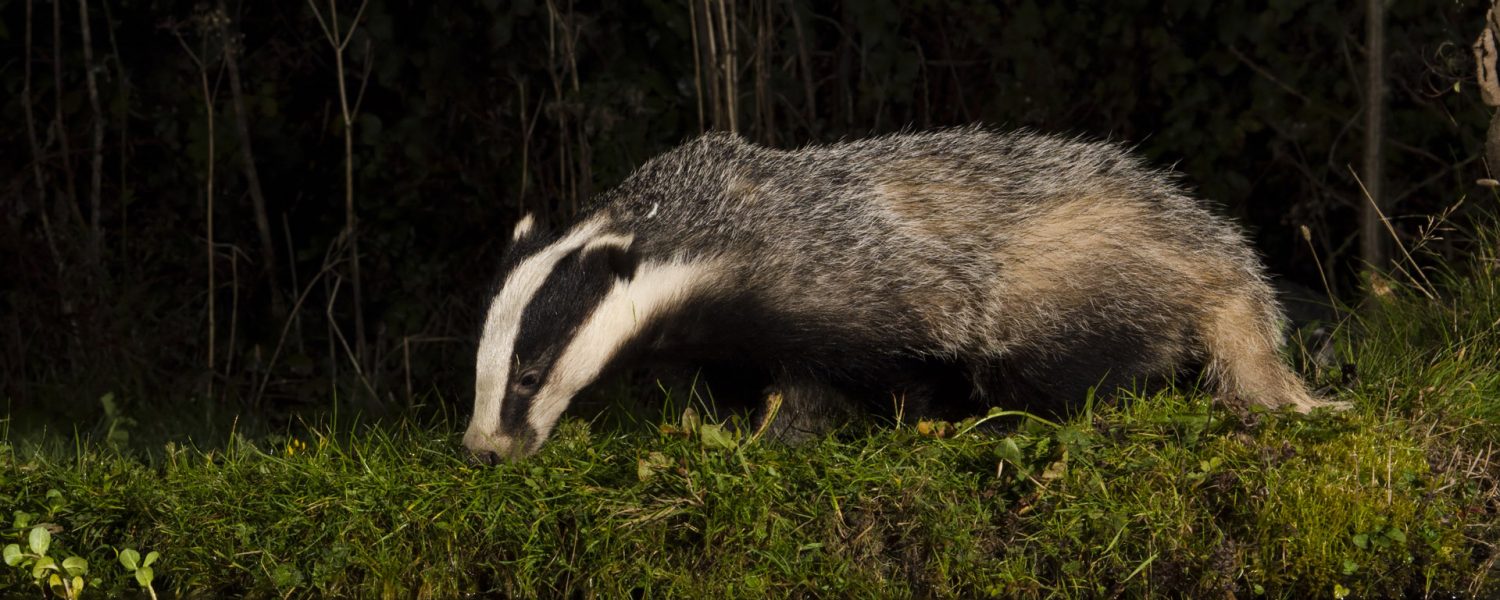


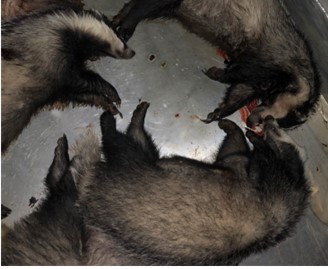




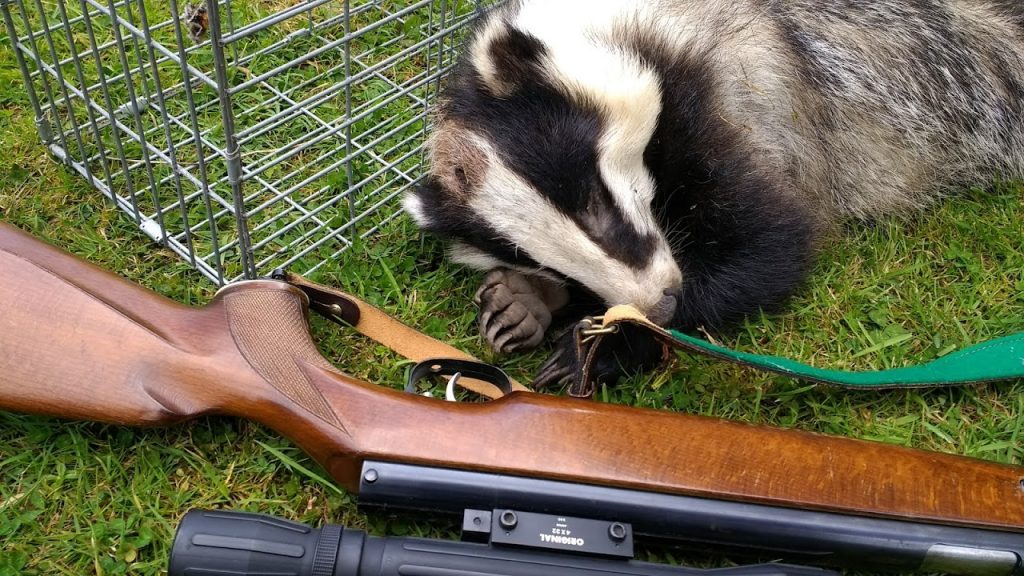



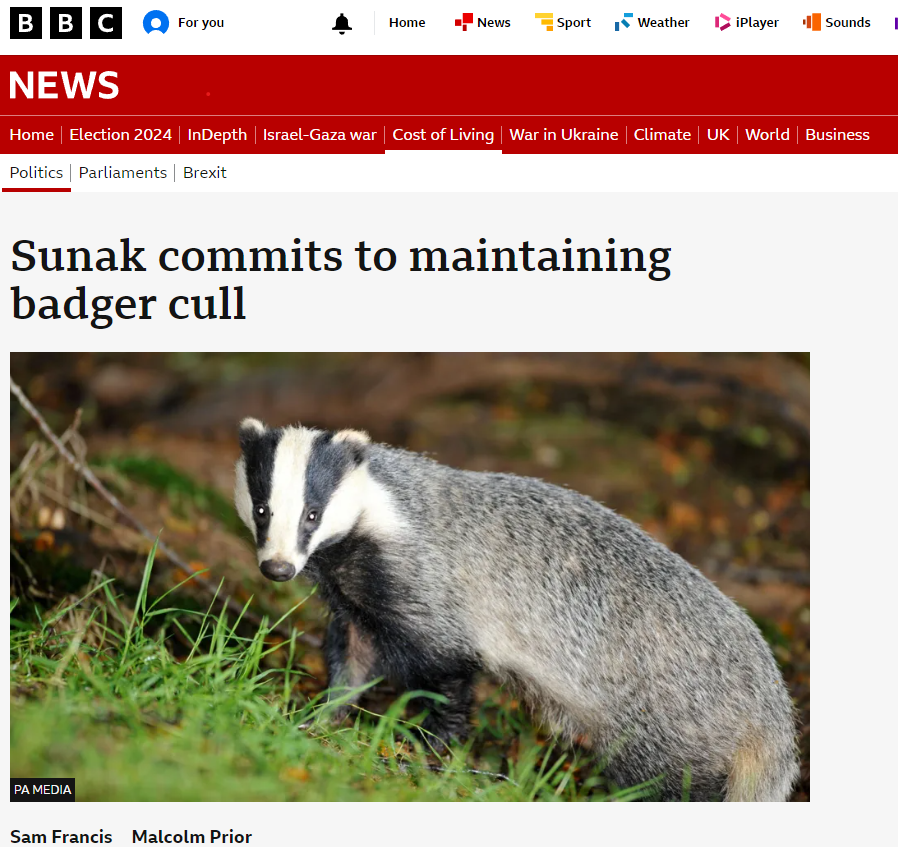




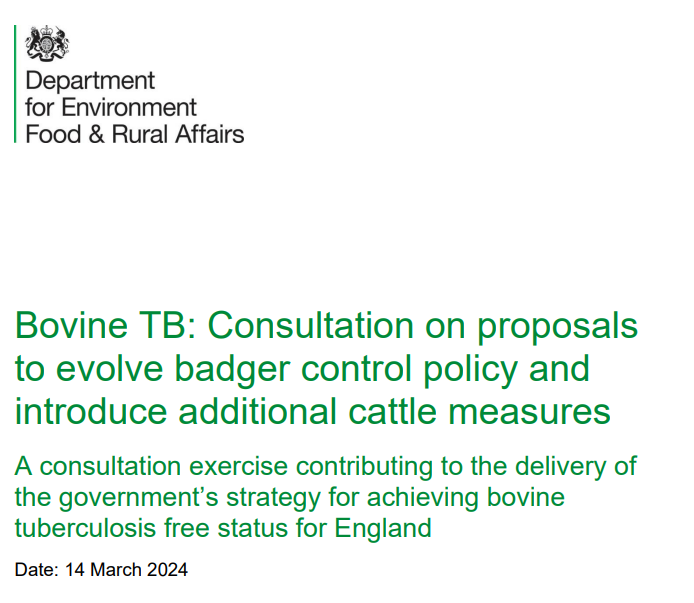 There has been a positive step forward.
There has been a positive step forward.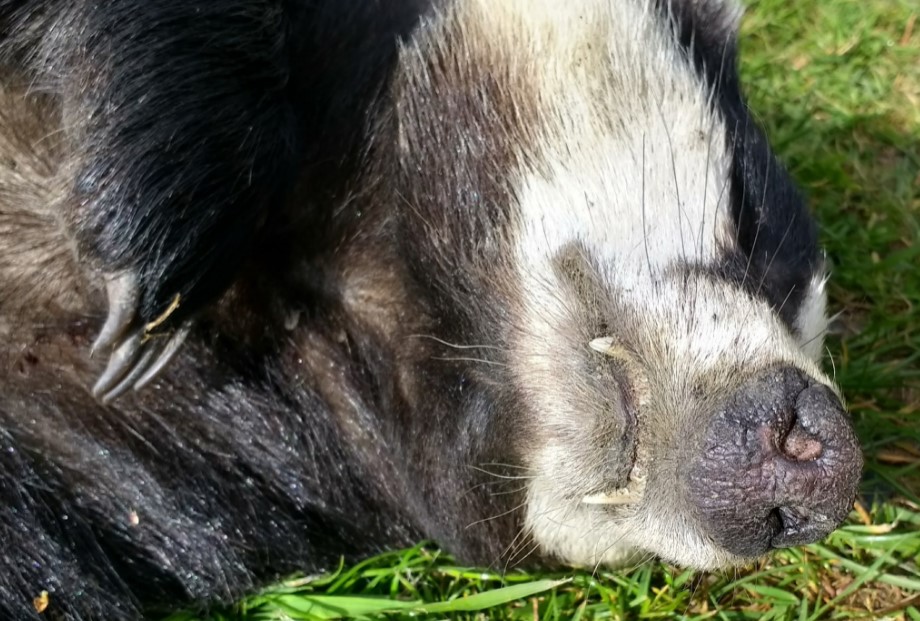 The Defra consultation on more badger culling ends on Monday 13th May 2024, at midnight. Since it was launched on 14th March there has been increasing incredulity over how sketchy and confused it is. It is a classic example of how not to consult with the public over an extremely important decision on how to tackle a complex disease epidemic.
The Defra consultation on more badger culling ends on Monday 13th May 2024, at midnight. Since it was launched on 14th March there has been increasing incredulity over how sketchy and confused it is. It is a classic example of how not to consult with the public over an extremely important decision on how to tackle a complex disease epidemic.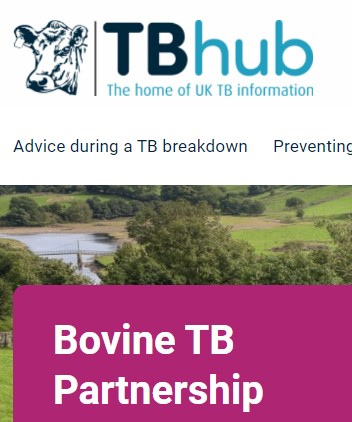 The BTB Partnership was set up as a group of largely cherry-picked farmers and vets, most of them it would seem wedded to badger culling, and ‘hired and fired’ by Defra who also control the agenda, with secrecy over its work, reporting and outputs. There is a blog about the shambolic Partnership
The BTB Partnership was set up as a group of largely cherry-picked farmers and vets, most of them it would seem wedded to badger culling, and ‘hired and fired’ by Defra who also control the agenda, with secrecy over its work, reporting and outputs. There is a blog about the shambolic Partnership 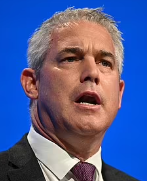 The new Secretary of State in Defra’s revolving doors of sackings and appointments is Steve Barclay. No one in cabinet wants to do the Defra job. You have to deal with climate change, flooding, sewage and farm waste in rivers and on beaches and wangle ways around protecting nature as a flurry of screamingly bad diseases flourish with industrial farming. So Barclay sets out the consultation, claiming a figure of 56% decline in herd breakdowns after four years of culling, based on the ‘before and after’ APHA paper (Birch et al published Feb 28 this year), with absolutely none of the controls of a scientific study checking causation. There is no comparison of culled areas with unculled areas. There is a blog about the problems of Birch et al. preprint
The new Secretary of State in Defra’s revolving doors of sackings and appointments is Steve Barclay. No one in cabinet wants to do the Defra job. You have to deal with climate change, flooding, sewage and farm waste in rivers and on beaches and wangle ways around protecting nature as a flurry of screamingly bad diseases flourish with industrial farming. So Barclay sets out the consultation, claiming a figure of 56% decline in herd breakdowns after four years of culling, based on the ‘before and after’ APHA paper (Birch et al published Feb 28 this year), with absolutely none of the controls of a scientific study checking causation. There is no comparison of culled areas with unculled areas. There is a blog about the problems of Birch et al. preprint  Why did they drop a weak bit of analysis (Birch et al. 2024 ) just in front of the consultation and weaponise it to try to force a return to mass culling? Results from Cumbria, south of Penrith, showed that cluster culling was a sham in Area 32, and cattle measures had resolved bTB in all but chronic herds before the first of the 1115 mostly healthy badgers were shot, from 2018.The independent report “
Why did they drop a weak bit of analysis (Birch et al. 2024 ) just in front of the consultation and weaponise it to try to force a return to mass culling? Results from Cumbria, south of Penrith, showed that cluster culling was a sham in Area 32, and cattle measures had resolved bTB in all but chronic herds before the first of the 1115 mostly healthy badgers were shot, from 2018.The independent report “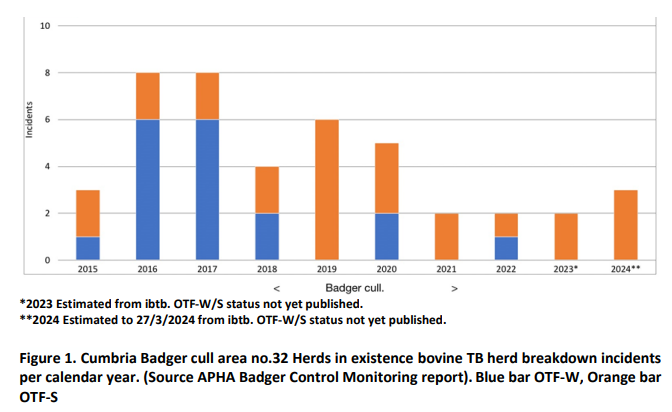 The confusion and lack of technical reporting on cattle vaccination, and the need for enhanced testing according to the learning from Gatcombe farm in Devon has not been mentioned at all – no options provided. Airbrushed out.
The confusion and lack of technical reporting on cattle vaccination, and the need for enhanced testing according to the learning from Gatcombe farm in Devon has not been mentioned at all – no options provided. Airbrushed out.